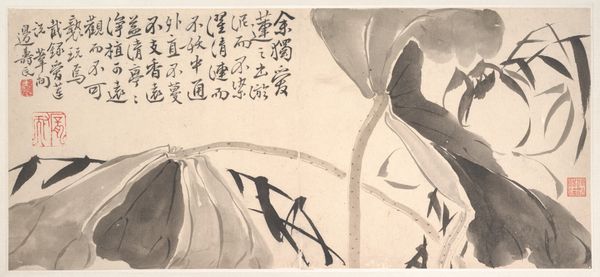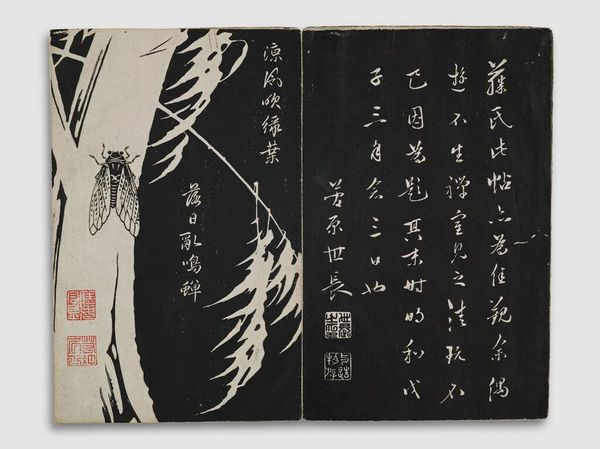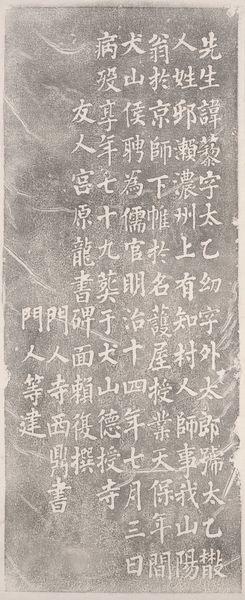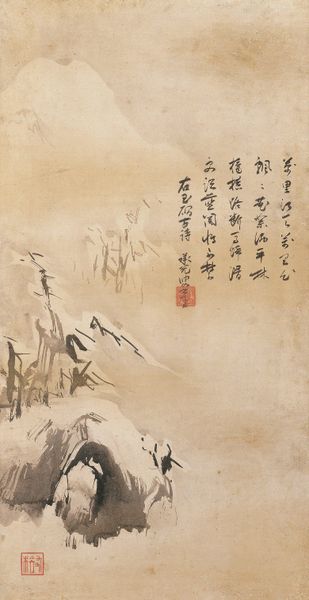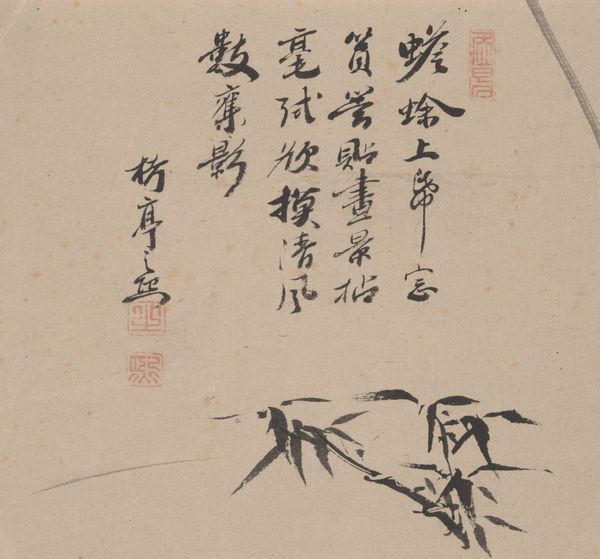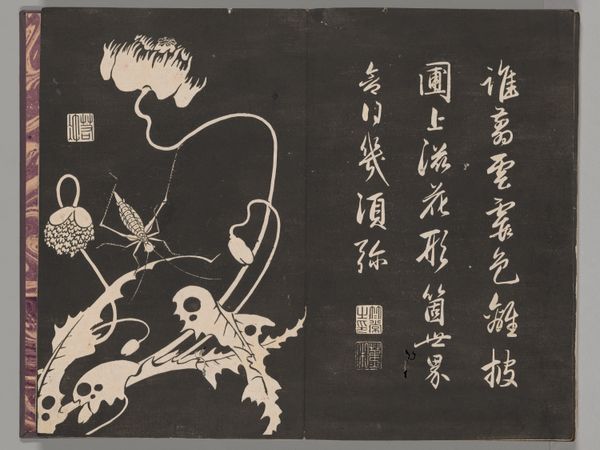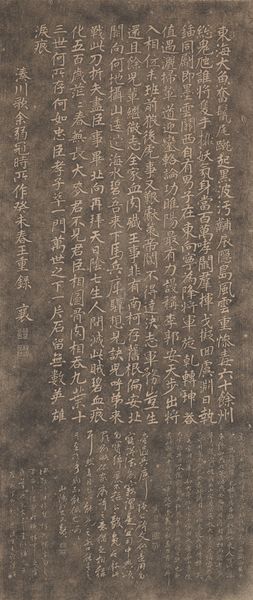
drawing, paper, ink-on-paper, hanging-scroll, ink
#
portrait
#
drawing
#
asian-art
#
ukiyo-e
#
paper
#
ink-on-paper
#
hanging-scroll
#
ink
#
calligraphy
Dimensions: 25 3/4 × 14 13/16 in. (65.41 × 37.62 cm) (image)62 1/2 × 20 3/16 in. (158.75 × 51.28 cm) (mount, without roller)
Copyright: Public Domain
Editor: Here we have "Chasing a Mouse," a mid-19th century ink on paper hanging scroll by Morita Sessai. It's fascinating – the artist’s economical use of line against the dark background really makes the scene pop, especially the figures in the foreground. What can you tell us about this piece? Curator: Looking at "Chasing a Mouse" through a materialist lens brings the labor and the making of the artwork into sharp focus. Consider the paper itself. The type of paper, its texture, its absorbency—these are all crucial elements influencing how the ink behaves and the final visual outcome. What can you infer from the hanging scroll format itself? Editor: I suppose the hanging scroll format dictates a certain way the art is received, influencing how one views and interacts with it… like ritual? Curator: Precisely. It dictates presentation and consumption. The physical act of unrolling and viewing necessitates time, deliberate attention. Think also about the social context of ink production – where did the materials originate, who processed them, and who had access to these materials? This reveals insights into class structures and the artistic economy of the time. What about the relationship between the calligraphic text and the image? Editor: It almost overpowers the image, but at the same time they work together… Is it common to integrate such a big block of text into a visual work like this? Curator: The integration is deliberate. The text reinforces the scene’s meaning, but its physical presence also calls attention to the skill of the calligrapher. It also tells us something of the patrons and markets available for artwork such as this; were the two created separately? Or where they collaborative in process and realization? What do you make of the line work in the drawing and writing? Editor: It strikes me that the lines create simplified shapes for easy interpretation. It all comes together so elegantly from simple and readily available media, transforming ordinary materials. Thank you for the insightful points! Curator: Absolutely. By considering the materials and processes involved, we gain a deeper understanding not only of the artwork but also of the society that produced it.
Comments
No comments
Be the first to comment and join the conversation on the ultimate creative platform.


